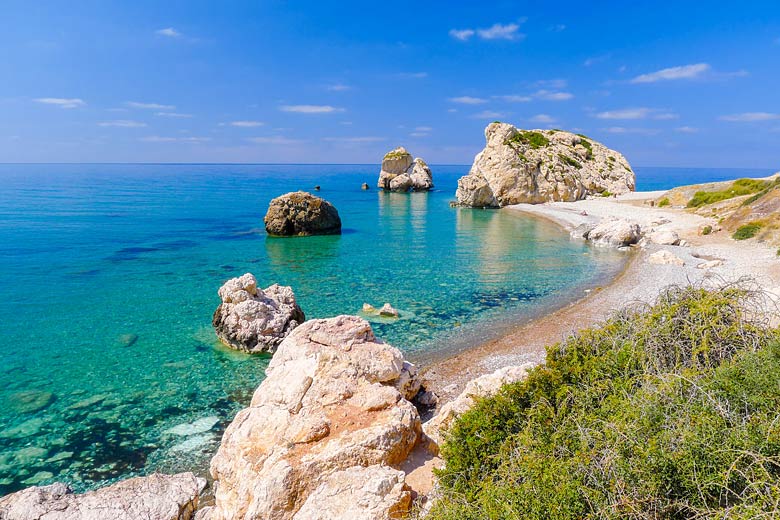- Check out last minute deals on holiday rentals
- Book properties in the UK, Europe & around the world
- Filter top offers, explore by map or search by date
Cyprus weather by month
Check out Cyprus weather averages by month. Compare detailed monthly climate statistics including temperature, rainfall and sunshine figures.
| Jan | Feb | Mar | Apr | May | Jun | Jul | Aug | Sep | Oct | Nov | Dec | |
|---|---|---|---|---|---|---|---|---|---|---|---|---|
| Maximum daytime temperature °F |  61 61 |
 61 61 |
 63 63 |
 70 70 |
 75 75 |
 82 82 |
 86 86 |
 86 86 |
 84 84 |
 77 77 |
 70 70 |
 63 63 |
| Hours of sunshine (daily) | ||||||||||||
| Days with some rainfall |  14 14 |
 12 12 |
 9 9 |
 5 5 |
 3 3 |
 1 1 |
 1 1 |
 1 1 |
 1 1 |
 4 4 |
 6 6 |
 13 13 |
| Sea temperature °F |  63 63 |
 61 61 |
 61 61 |
 63 63 |
 68 68 |
 75 75 |
 81 81 |
 82 82 |
 79 79 |
 75 75 |
 70 70 |
 66 66 |
More about Cyprus
Cyprus by month
Jan Feb Mar Apr May Jun Jul Aug Sep Oct Nov Dec
Recommended for Cyprus
The climate guide for Cyprus (Paphos) shows long term monthly weather averages processed from data supplied by CRU (University of East Anglia), the Met Office & the Netherlands Meteorological Institute. Find out more about our data sources.
Top Cyprus destinations
Below are average maximum temperatures at popular countries, regions and places in Cyprus for next month - May. Select a destination to see the climate guide for all months of the year.
All Cyprus regions
All Cyprus destinations
- Amathus Bay
- Aphrodite Hills
- Argaka
- Ayia Marina
- Ayia Napa
- Coral Bay
- Episkopi
- Kalavassos
- Kyrenia
- Larnaca
- Latchi
- Limassol
- Miliou
- Nea Dimmata
- Nicosia
- Nissi Bay
- Omodhos
- Paphos
- Paralimni
- Peyia
- Pissouri
- Polis
- Protaras
- Tochni
Metric (°C) | Imperial (°F)
Cyprus climate overview
The Island of Cyprus at the eastern end of the Mediterranean remains divided between the Turkish north and Greek-Cypriot south. Its economy relies on agricultural exports, supplemented by light industry and tourism.
The Troodos Mountains in the southwest are volcanic and scenic. The higher slopes have been reforested with pine and cedar trees while lower slopes support vineyards and citrus fruit plantations. Embedded within the mountains are many villages such as Omodhos with ancient monasteries and Byzantine churches.
A long narrow mountain range, composed mainly of limestone, runs along the northern coast of Cyprus. The northern slopes are well clothed in pine forest, in contrast to the southern slopes, which have little more than scrub vegetation exposing the light coloured rock beneath.
The Mesaoria Plain is the lowland region lying between the two mountain ranges. Its fertile soil supports large areas of wheat and barley, as well as the distinctive yellow mustard crop during the spring.
Coastal areas are a mixture of sandy beaches and rugged wild shoreline with coves and bays, such as Coral Bay in the west.
Cyprus has a sub-tropical climate with a summer dry season and summer temperatures that are hot inland, while sea breezes keep the coasts and mountains tolerably warm. Winters are typically cool and breezy, even cold in the mountains.
Summers are dry and parched, but rain is possible from November to March and falls mostly over the Troodos Mountains, dumping enough snow to maintain ski resorts at the highest levels. The eastern half of the island is drier, in fact winter rains here can be so unreliable that some years near-drought conditions prevail.
More about Cyprus
Compare Cyprus with the UK
Below the Cyprus chart shows average maximum daytime temperature for Cyprus (Paphos) and the UK (London).
Maximum daytime temperature (°F)
Metric (°C) | Imperial (°F)
Compare more Cyprus weather >>
Be inspired
Get your weekly fix of holiday inspiration from some of the world's best travel writers plus save on your next trip with the latest exclusive offers
We promise not to share your details
Related posts
Popular travel offers
Explore holidays in the sun for less
- Beach holidays
- Family holidays
- City breaks
- Summer holidays
- Winter sun holidays
- Holiday offers
- Top travel brands
- Airlines & flights
- Discount hotels
- Airport parking deals
- TUI
- Jet2holidays
- easyJet holidays
- Love Holidays
- January sales
Airport parking
- Manchester Airport
- Stansted Airport
- Bristol Airport
- Luton Airport
- Birmingham Airport
- Edinburgh Airport
- Gatwick Airport
- Glasgow Airport
- Newcastle Airport
Airport lounges
- Manchester Airport
- Birmingham Airport
- Bristol Airport
- Edinburgh Airport
- Glasgow Airport
- Heathrow Airport
- Newcastle Airport
- Stansted Airport
- Gatwick Airport


























